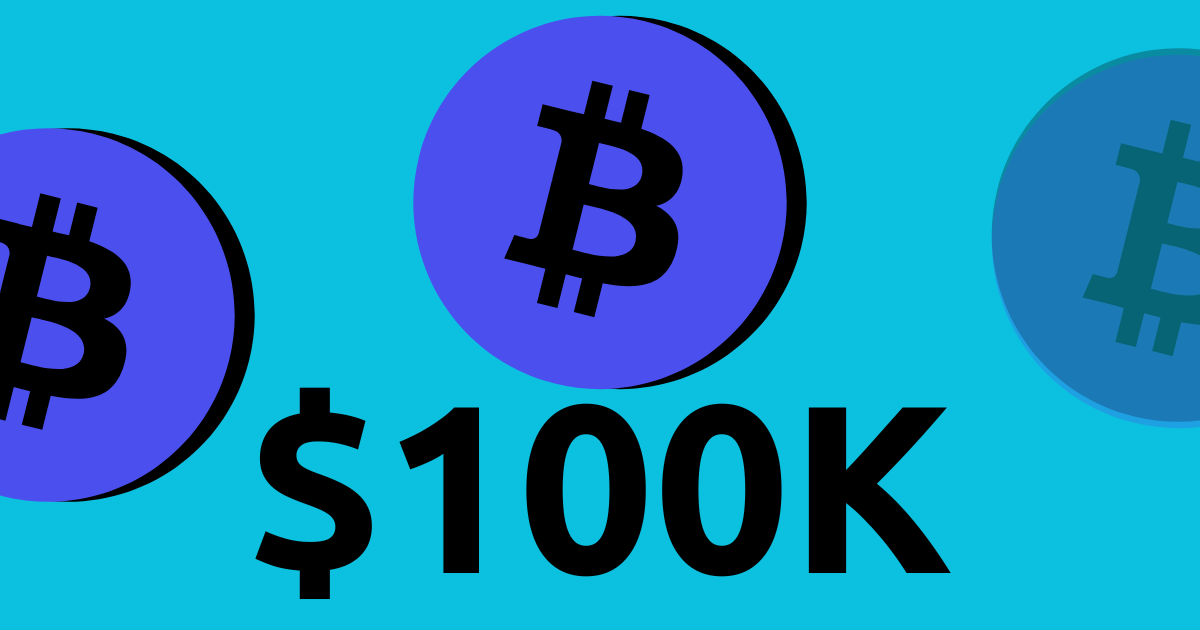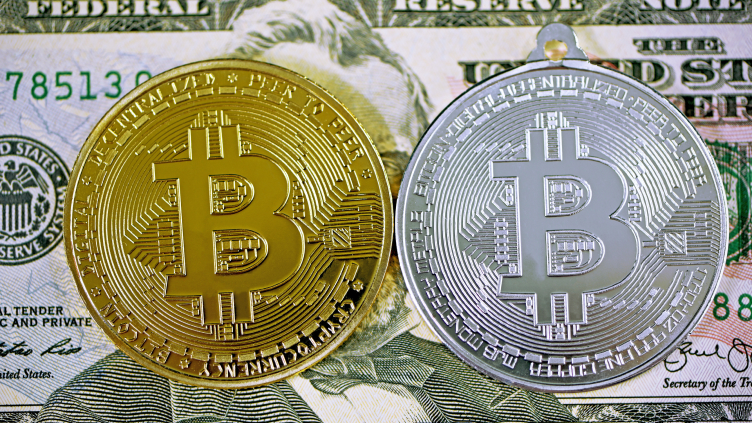Bitcoin
Using Power Laws to Predict When Bitcoin Price Will Reach $1 Million

The following is a guest post by Rajagopal Menon, Vice President at WazirX.
Come the bull market, come the models to predict the price of Bitcoin. In the last bull market of 2021, the Stock-to-Flow (S2F) model was the rage of the season. This model, created by Plan B, assessed the scarcity of assets by comparing stock with annual production. Applied to Bitcoin, the S2F model emphasized its “digital gold” potential and provided scarcity-based long-term price predictions. However, the S2F model disappeared in the crypto winter of 2022.
But fear not, in the current bull run, there is a new model in town – the Power Law Model, which claims to predict the price of Bitcoin with remarkable accuracy.
Understanding Power Laws
In a world seemingly full of chaos and randomness, scientists have discovered hidden patterns and relationships known as laws of power. These laws provide a framework for understanding how different phenomena interact, revealing consistent mathematical patterns that govern various aspects of our universe.
Laws of Power in Everyday Life
Power laws are fascinating mathematical relationships that appear in various phenomena, offering insights into the underlying simplicity of complex systems. They describe how two quantities relate to each other, with a change in one quantity leading to a proportional change in the other. This relationship spans different scales, from the microcosmic to the cosmic, influencing biology, society, technology and natural phenomena.
Animal size limits
Galileo’s square cube law is a classic example of a power law in nature, explaining how an animal’s size affects its strength. As animals grow, their bulk and weight increase much faster than their strength. This law establishes natural limits, explaining why larger animals have thicker bones and why larger animals are found in aquatic environments where buoyancy compensates for weight.
Metabolic rates
Max Kleber’s research on metabolic rates further demonstrates the applicability of power laws. It reveals that an organism’s metabolic rate increases to ¾ the power of its mass, indicating that larger animals are more energy efficient. This principle has a significant impact on understanding the life cycles, growth rates and sustainability of species.
Natural Phenomena and Human Activities
Power laws govern diverse phenomena, from the distribution of earthquake magnitudes to the frequency of words in a language. They explain why we observe a small number of significant events alongside numerous smaller cases. For example, Zipf’s law describes the frequency of words in languages, highlighting the disproportionate occurrence of common words compared to less frequent ones.
Beyond natural phenomena
Power laws extend to human activities such as economics, finance and technology. They elucidate the distribution of wealth, where some individuals own a significant portion of the wealth. In technology, power laws describe how content interacts on the Internet, with some highly popular and many less popular nodes forming a long-tail distribution.
Bitcoin Power Law
Astrophysicist Giovanni Santasi discovered this connection. He says 15 years of data shows that Bitcoin also follows a power law principle. Santostasi first shared the power law model on the r/Bitcoin subreddit in 2018. However, it witnessed a resurgence in January after financial YouTuber Andrei Jeikh mentioned it to his 2.3 million subscribers in a video.
Giovanni’s theory says that the price of Bitcoin is not as random as it seems. There is randomness in this, but in the long run, the price of Bitcoin follows a specific mathematical model. It’s not just a mathematical formula that some guy drew a line at; instead, it follows a power law like those observed throughout the universe.
The yellow line represents the current price and the red line represents the support line, Bitcoin’s level usually never drops below. The green line is the linear regression line, which is like the fair value price where Bitcoin will eventually return, and the purple line is the resistance line where Bitcoin typically tops out.
Predicting the future of Bitcoin
Santostasi’s Power Law Model charts Bitcoin’s price trajectory with remarkable accuracy. It features a chart showing the current price of Bitcoin, a support line indicating the level that Bitcoin typically does not fall below, a linear regression line representing a fair value price, and a resistance line marking the level that Bitcoin typically does not fall below. reaches before a recession.
This model highlights Bitcoin’s remarkably linear growth, particularly evident when outliers are removed. Despite occasional fluctuations, Bitcoin’s overall trajectory follows a discernible pattern reminiscent of other phenomena governed by power laws.
Implications for investors
The Power Law Model offers intriguing insights into Bitcoin’s potential future spikes. Santostasi’s analysis suggests that Bitcoin could peak at $210,000 in January 2026, followed by a subsequent decline to around $60,000. He goes on to predict that Bitcoin will be worth $1 million by July 2033. While mathematical models provide valuable information, they are not immune to errors and may not take into account unforeseen events that could significantly impact prices.
“All models are broken, but some are useful” means that although models may not be perfect, they can still provide valuable information. Models such as the power law model or the stock-to-flow model for predicting the price of Bitcoin have their flaws and limitations. For example, Crypto Quant’s Julio Marino pointed out problems with the power law model, such as underestimating errors and giving a misleading impression of accuracy.
Interestingly, both the power law and stock-to-flow models have faced similar criticism. Despite their flaws, they have historically made almost the same predictions for the price of Bitcoin. However, over time, they may differ in their predictions.
The question arises: if these models are correct, why bother with traditional investment strategies like the 60/40 portfolio? Some argue that new models that explain Bitcoin’s behavior could offer better returns.
While some may think these models are useless, others, like the speaker, believe they still have value. Scarcity, driven by Bitcoin’s fixed supply, plays a role in its price appreciation. Furthermore, factors such as M2 growth also influence the price of Bitcoin.
Although models can provide useful information, they cannot predict the future. Even if the models are flawed, Bitcoin’s trajectory appears upward. Therefore, although it is essential to consider these models, it is also essential to recognize their limitations.
Bitcoin
Bitcoin Will Surge to $100K After Q4, Here’s Why

Dan Weiskopf, portfolio manager at Tidal Financial Group, spoke with David Lin and discussed the future prospects of Bitcoin. The focus was on the future of Bitcoin, especially its potential to reach $100,000. The talk also touched on recent market trends, noting strong interest in Bitcoin ETFs as a possible boost to its price. Looking ahead, there is hope that more platforms will approve Bitcoin ETFs, possibly pushing its price to $100,000.
Forecasts and Volatility: The Path to New Highs
While some predict Bitcoin could go as high as $150,000 or even $1 million, Dan agrees that it needs to hit $100,000 first. Dan also acknowledged Bitcoin’s volatility, saying that large price drops of as much as 50% to 70% could happen, drawing on his experience since 2017.
“We’re going to new highs because I think partly because ETF inflows have been really strong lately. Yeah, and then I think you’ll have more platforms approving spot Bitcoin ETFs in Q4, and we’re going to go up to 100K,” he said.
Big Investors and the Transformative Power of Bitcoin
He also discussed what is persuading large investors to get in on this cycle. He mentioned two key factors. Many argue that if you haven’t invested in Bitcoin, you’re missing out, citing its strong performance over the past decade. This pressure could influence returns and client expectations.
However, he emphasized a deeper reason: if you are not embracing the transformation driven by Bitcoin and digital assets, you may face challenges. This technology has the potential to reshape industries, just as the internet revolutionized business.
“A lot of people look at Bitcoin and crypto and don’t appreciate that with higher prices comes more supply. We talk about 100K, I would expect more supply to come into the market as we go up, and that’s not really new news, but it’s higher demand that’s offsetting that supply,” he added.
Read too: It’s time tor ETH Point ETF: Here’s What to Expect From the Ethereum Price Rally
Bitcoin
Bitcoin Jumps as Markets See Increased Chances of Trump Victory

CFOTO | Future Publishing | Getty Images
Bitcoin hit a two-week high on Monday as betting markets suggested a higher chance of crypto-friendly candidate Donald Trump winning the US presidential election.
The value of the world’s largest cryptocurrency, bitcoin, was up about 5% as of 1:40 p.m. London time to $62,781.48, according to CoinGecko.
The rally follow the dramatic and failed assassination attempt about the former president Trump on Saturday.
“There is a ‘parallel’ to the assassination of President Reagan in 1981,” even though it was not an election year, Ben Emons, chief investment officer at FedWatch Advisors, said in an emailed note.
“After the incident, Reagan’s popularity skyrocketed amid a double-dip recession. The S&P 500, however, fell 9% in the aftermath due to the economic malaise. But in the current strong economy, former President Trump’s favorability is likely to skyrocket and impact markets positively.”
Investors said on the weekend they were hoping that so-called “Trump victory trades” would get a boost. These trades broadened to include several cryptocurrency stocks, such as Coinbase Global and miner Riot platformswhich rose 4.5% and 5.25%, respectively, in pre-market trading.
“Bitcoin’s price rose about 9% over the weekend, which could indicate that investors are hoping that a Trump presidency will create a more favorable regulatory climate for the crypto industry,” Zach Pandl, head of research at Grayscale Investments, told CNBC in an email.
Trump has yet to lay out any detailed proposals on cryptocurrency regulation, but the Republican candidate is now seen as broadly supportive of the sector — despite his past skepticism. He is set to speak at a major annual bitcoin conference later this month.
Trump’s campaign started accepting donations of the cryptocurrency industry in May and its the message became increasingly positive about the future of these digital assets. He also sought to position oneself against Democrats who are in favor of controlling the industry, such as Senator Elizabeth Warren.
“In addition, macro policy changes under a second Trump presidency — including continued deficit spending, reduced U.S. leadership in international affairs, weaker Federal Reserve independence, and a desire for currency weakness to help reduce the trade deficit, among other things — could introduce downside risks to the U.S. dollar in the medium term. Any downside risks to the U.S. dollar could provide support for Bitcoin’s price,” Pandl added.
Last month, analysts at Standard Chartered said that the US presidential election is the next key catalyst for bitcoin’s price and a Trump victory could push it to $150,000 by the end of the year.
“Cryptocurrencies have not had an easy time in recent months. We are currently in a crisis of previously growing capital inflows into this market that can be measured by the capitalization of stablecoins, which has frozen in the last two months,” Grzegorz Drozdz, market analyst at Conotoxia, told CNBC in an email.
With a higher likelihood of a Trump presidency and the consequent reduced chances of unrest and destabilization in the US, Drozdz now sees a potential “influx of confidence into the markets,” which could positively impact cryptocurrencies and bitcoin in the coming weeks.
Bitcoin
Germany Sells Final Bitcoin Reserves of Initial $3 Billion in Holdings

Germany Sells Final Bitcoin Reserves of Initial $3 Billion in Holdings
The German government completed the sale of its remaining Bitcoin holdings on July 12. The final transaction involved 3,846 Bitcoin, valued at around $62,604 per Bitcoin, which were sent to “Flow Traders and 139Po,” entities likely for institutional/OTC deposit services, according to for Arkham Intelligence.
The majority of the 50,000 Bitcoins sold by the German government over the past three weeks originated from asset seizures. This sale marked the culmination of weeks of increased sales activity by the German government, which unloaded tens of thousands of Bitcoins in multiple tranches. This significant liquidation was a key factor in keeping the Bitcoin selloff at a low of $54,000 on July 5.
Despite Germany’s exit from its Bitcoin holdings, market pressures remain due to Mt. Gox’s impending $9 billion repayment plan. The Mt. Gox exchange, which collapsed in 2014 when Bitcoin was still in the hundreds of dollars, has long been a source of market anxiety. The repayment plan aims to compensate creditors, potentially adding significant selling pressure to the market in the coming weeks. However, it is difficult to estimate the impact of Mt. Gox’s repayment on the markets due to several factors.
Amid heightened selling pressure, institutional investors seized the opportunity to buy the dip. Data from CoinShares showed that U.S. exchange-traded funds (ETFs) saw $295 million in inflows during the week of July 8, reversing a trend of suppressed inflows into these investment funds. This activity suggests that institutional investors remain confident in Bitcoin’s long-term prospects.
Bitcoin
Bitcoin surges as traders bet on Donald Trump election victory after shooting

Unlock the US Election Countdown newsletter for free
The stories that matter about money and politics in the race for the White House
Bitcoin surged on Monday following an assassination attempt on Donald Trump, as investors increased their bets on the former president winning the US presidential election in November.
Bitcoin’s price rose as much as 9.1 percent to $62,830, its highest level in two weeks, after a shooter hit Trump in the ear at a campaign rally over the weekend. The Republican is seen as the most pro-crypto candidate, having hosted industry executives at Mar-a-Lago and expressed enthusiasm for bitcoin mining in the U.S.
Trump’s campaign also accepted cryptocurrency payments, a first for a major U.S. political party, raising hopes of an end to the U.S. regulatory crackdown on the sector seen in recent years.
“The probability of a Donald Trump victory has increased significantly,” said Grzegorz Dróżdż, market analyst at exchange firm Conotoxia, adding that a Trump presidency would have a “positive impact” on cryptocurrencies.
Shares of Trump’s Truth social media company jumped 60 percent in premarket trading. Trump Media & Technology Group went public in March in a merger with a blank-check company and rallied ahead of the debate between Trump and President Joe Biden last month.
The slimmer chances of a second Trump presidency were also felt in broader financial markets. U.S. Treasury yields and the dollar rose in a more muted version of the reaction that followed Biden’s disastrous debate performance.
Many investors believe Trump’s tax-cutting policies would increase deficits and inflation, hurting U.S. Treasuries and boosting the dollar, in a pattern similar to what occurred after his 2016 election victory.
The U.S. dollar index, which tracks the greenback against a basket of six other major currencies, rose 0.2% in morning trade, having weakened so far in July as investors increased their bets on a September interest rate cut by the Federal Reserve.
Yields on benchmark 10-year Treasuries rose 0.03 percentage point to 4.21 percent, reflecting a small decline in price. Contracts tracking Wall Street’s blue-chip S&P 500 and the tech-heavy Nasdaq 100 rose 0.3 percent and 0.5 percent ahead of the New York open.
Monday’s movements “touch[s] with a Trumpian theme given the popular narrative that he is good for business and… his pro-crypto stance,” Rabobank analysts said in a note to clients.
“For markets, the complexities of the US political landscape have boiled down to the assumption that the weekend’s events will lead to a greater chance of Trump winning the November presidential election,” they added.
Bitcoin peaked above $70,000 in mid-March but has struggled to make headway since the so-called halving event in April, when the number of daily bitcoins available for miners to share to secure the bitcoin network fell from 900 to 450. Some analysts had expected bitcoin to rebound after the halving.
-

 News1 year ago
News1 year ago“Captain Tsubasa – RIVALS” launches on Oasys Blockchain
-

 Ethereum1 year ago
Ethereum1 year agoComment deux frères auraient dérobé 25 millions de dollars lors d’un braquage d’Ethereum de 12 secondes • The Register
-

 News1 year ago
News1 year agoSolana ranks the fastest blockchain in the world, surpassing Ethereum, Polygon ⋆ ZyCrypto
-

 Videos1 year ago
Videos1 year agoHistoric steps for US cryptocurrencies! With a shocking majority vote!🚨
-

 Videos1 year ago
Videos1 year agoIs Emorya the next gem💎 of this Bitcoin bull run?
-

 News1 year ago
News1 year agoSolana Surpasses Ethereum and Polygon as the Fastest Blockchain ⋆ ZyCrypto
-

 Videos1 year ago
Videos1 year agoNexus Chain – Ethereum L2 with the GREATEST Potential?
-

 Ethereum1 year ago
Ethereum1 year agoScaling Ethereum with L2s damaged its Tokenomics. Is it possible to repair it?
-

 News1 year ago
News1 year agoFnality, HQLAᵡ aims to launch blockchain intraday repositories this year – Ledger Insights
-

 Regulation1 year ago
Regulation1 year agoFinancial Intelligence Unit imposes ₹18.82 crore fine on cryptocurrency exchange Binance for violating anti-money laundering norms
-

 Bitcoin1 year ago
Bitcoin1 year agoBitcoin Drops to $60K, Threatening to Derail Prices of Ether, Solana, XRP, Dogecoin, and Shiba Inu ⋆ ZyCrypto
-

 Videos1 year ago
Videos1 year agoRaoul Pal’s Crypto Predictions AFTER Bitcoin Halving in 2024 (The NEXT Solana)










